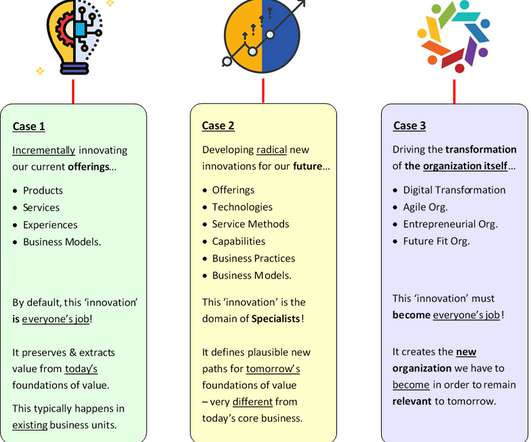Incremental or Radical Innovation?
IdeaScale
OCTOBER 12, 2017
Consider what incremental innovations your customers and industry are leaning towards and ask yourself how you can step beyond it. With every innovation or failure, large or small, analyze them closely for lessons learned and opportunities they’ve created. Innovation begets innovation. Contact us.
































Let's personalize your content